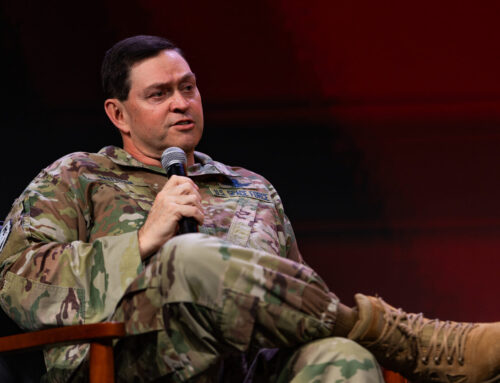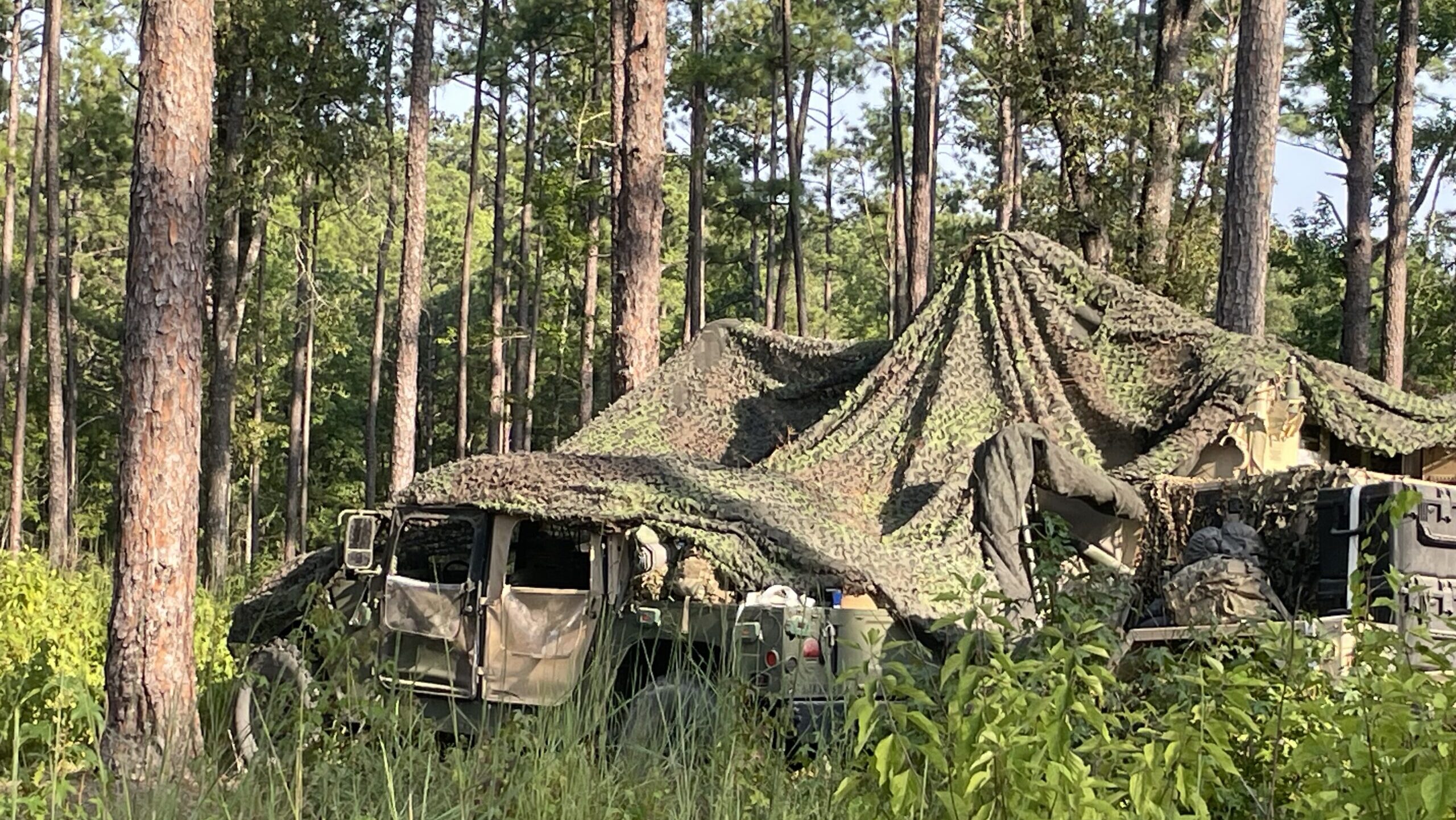Mr. Michael C. Monteleone III, Director, Assured Positioning, Navigation and Timing/Space Cross-Functional Team, Army Futures Command, MG Jeth B. Rey, Director, Network Cross-Functional Team, Army Futures Command and Mr. Mark C. Kitz, Program Executive Officer, Intelligence, Electronic Warfare and Sensors, US Army, discuss how the Army of 2030 will fight in a GPS denied and degraded environment at AUSA Global Force Symposium & Exposition 2023 on May 28, 2023 in Huntsville, Alabama. (US Army Photo by Patrick Hunter)
WASHINGTON — The Army’s Program Executive Office for Command, Control and Communications- Tactical (PEO C3T), the office responsible for developing and supporting the Army’s network, is officially rebranding to better reflect its mission set.
Goodbye, PEO C3T, and hello PEO C3N: Command, Control and Communications – Network.
“This is deeper than just a simple rebranding. This event signifies and recognizes the changing environment and how we must evolve, and the importance of our network and command and control capabilities.” Lt. Gen. Rob Collins, principal military deputy to the Assistant Secretary of the Army, Army Acquisition Corps and former PEO for C3N, said in a press release.
The change comes nearly a year after the office underwent a revamp in which it absorbed several organizations from the PEO Enterprise Information Systems (PEO EIS), combining a number of the Army’s enterprise and tactical network capabilities under one roof.
“Last year, the Army decided to merge the enterprise and tactical network efforts under a single portfolio, resulting in a streamlined effort to develop the unified network as part of the Army’s network modernization strategy,” a PEO C3N spokesperson told Breaking Defense in an email ahead of today’s announcement.
Hence, today’s decision to drop the “tactical” portion of the name serves as a signifier of its mission to create a single network.
“Recent real-world operations in the Middle East continue to validate the need for a unified network,” the press release said.
“Events are changing at the velocity of which we have never seen before,” Collins said in the press release. “We have to be agile, mobile and lethal. We still have to be able to shoot, move, communicate, but now you have the land, sea, air and cyberspace domains that have to be interconnected and transparent to the warfighters.”
The Army’s unified network, which was announced nearly three years ago, is the service’s goal of breaking down the dozens of siloed legacy networks, mostly separated by tactical and enterprise portions, to create a more cohesive singular network.
“We can’t afford separate and disparate tools for a tactical and enterprise network if there’s opportunities for us to streamline and deliver the same purpose, right?” Mark Kitz, program executive officer of C3N, told Breaking Defense in a recent interview.
“I feel like it’s something we have to do. We have to build a more secure, integrated network,” he later added.
When the Army first announced this initiative three years ago, the service had 69 networks, with the goal of getting down to one by 2027. Last month Lt. Gen. John Morrison told an audience at a Defense News conference that the Army is down to nine networks.
However, PEO C3N noted in the release that creating the unified network will never be “finished” due to the ongoing advancements in technology and the “shifting nature” of military conflicts.











